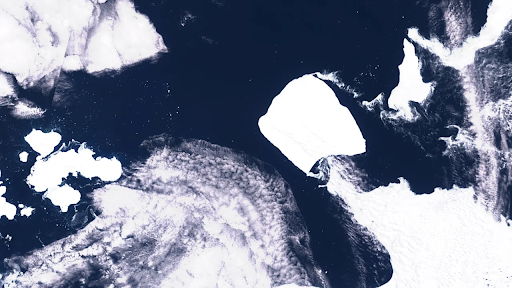The Antarctic has been the longstanding keeper of a frosty titan known as iceberg A23a, a behemoth more than double the size of London that has finally begun its journey across the southern seas. This colossal ice island, which has held its ground on the Antarctic seabed since 1986, is now on the move, initiating a spectacle that has caught the attention of glaciologists worldwide.
The story of A23a, a staggering 400 meters thick and covering almost 4,000 square kilometres, began when it calved from the Filchner-Ronne ice shelf and became grounded. For nearly 30 years, this icy giant stood motionless, but the relentless forces of nature have now set it adrift. According to Ella Gilbert and Oliver Marsh from the British Antarctic Survey, “The iceberg has probably shrunk enough to lose its grip on the seafloor as part of the natural growth cycle of the ice shelf.”
A23a’s dominion as the “largest current iceberg” has been contested over the years, with it occasionally overshadowed by even more gigantic but ephemeral icebergs, such as A68 in 2017 and A76 in 2021. Nonetheless, its current emancipation from the Weddell Sea floor marks a significant event in its life cycle.
As Gilbert and Marsh informed CNN, the iceberg’s newfound mobility will likely take it eastward, propelled by ocean currents, at a steady pace of five kilometres daily. While the detachment of A23a can be attributed to the natural ebb and flow of the ice shelf life, the scientists underscore a sobering caveat: climate change is altering Antarctica’s frozen landscape at an unprecedented rate, leading to massive annual ice losses.
The voyage of A23a is not merely the passage of ice across the water; it is a silent testimony to the dynamism of our planet’s cold extremes and a poignant reminder of the ongoing climate crisis. As this icy monolith drifts into the ocean’s vastness, it symbolizes the delicate balance between the natural cycles that have shaped our world for millennia and the human-driven changes that now accelerate them. The movement of the world’s most enormous iceberg is a call to awareness, a reminder of the ever-changing nature of Earth’s wilderness, and the profound impacts of our actions on these ancient rhythms.






















+ There are no comments
Add yours